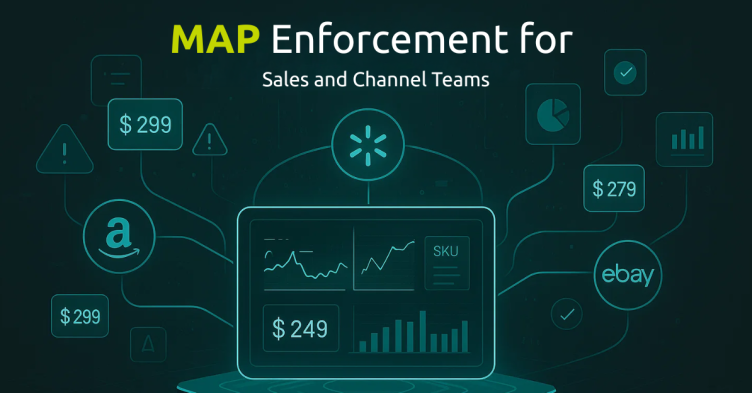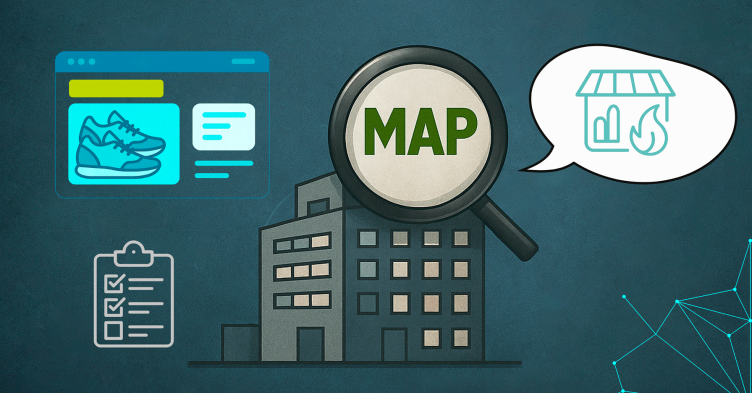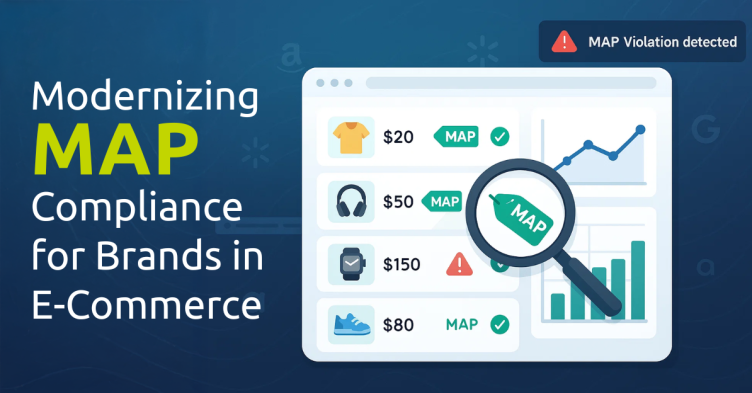MAP Pricing is a tactic used by brands in the US and Canada to protect their brand reputation. Without MAP pricing, in the dynamic pricing world of today, brands struggle with brand perceptions as their resellers continue to push their prices down. Many times, it feels like a race to the bottom. While a brand’s strategy may appear premium, the long-term sustainability of this may be threatened by retailers who may continue to lower prices.
There may be many factors contributing to the retailer’s downward pressure on price. They might be clearing inventory or using dynamic pricing algorithms to offer the lowest price. This problem is notorious in marketplaces such as Amazon where retailers use repricing software to adjust their SKU prices slightly lower than the next competitor, aiming to win the Amazon buy-box.
All this is very troubling for brands. We know many brands who have left the Amazon and Walmart marketplaces for this very reason. Getting out of a channel is a strategy. However, these two marketplaces are massive, and not all brands may want to leave. Another strategy is to monitor and enforce MAP in the US and Canada. This is another strategy that many brands use to protect their brand integrity.
Setting a Minimum Advertised Price is also a Strategy
Now, setting MAP pricing is a strategy. However, monitoring and enforcing violations are key to protecting brand health on an ongoing basis. Here are 2 MAP pricing strategies for a brand to take on.
- Product Catalog Strategy
Brands may want their whole product catalog to be at MAP price. However, this approach won’t help brands sell out and liquidate older stock and out-of-fashion products. Many brands only set MAP prices on their current and attractive products. This ensures that brand perception is maintained regarding popular and new products. It also offers brands the flexibility to sell their older stock. - MAP Holiday Strategy
The next minimum advertised price strategy is employed in which brands offer MAP holidays on their whole or a large part of their catalog during major holidays. For example, brands offer MAP holidays during Black Friday, Cyber Monday, and Christmas holidays in the US. Additionally, they also provide these holiday offers during Amazon Prime Day. Specific retailers may have holidays that align with their brick-and-mortar sale periods. Here is another example where apparel brands may offer MAP holidays during the end of summer back-to-school season or afterward when parents are shopping for their kids.
All these allow brands to protect their consumer brand perception while benefiting from sales that retailers offer during holidays when shoppers are expecting a bargain. However, monitoring the prices that retailers are setting is vital. A smart MAP monitoring software/service constantly detects retailer prices and identifies when resellers are violating the minimum advertised price. We at GrowByData offer this solution and augment our solution with service.
How can GrowByData help Brands with their MAP strategy?
Customized MAP Price Monitoring
We understand that a one-size-fits-all approach doesn’t work for every brand. That’s why we tailor our MAP monitoring solutions to meet specific needs. Our focus on high-quality SKU-level matching ensures precise MAP violation reporting. Since 2016, we’ve recognized the importance of data quality and strive to avoid false alarms. We also customize MAP violation detection to align with your brand’s MAP holiday schedule and reseller dynamics. Maintaining positive relationships with top resellers is crucial, so we recommend addressing minor infringements through direct communication rather than automated alerts. We share best practices to help brands identify effective strategies.
Insights into Reseller Network Health
Another significant advantage of MAP monitoring is assessing the health of your reseller network. You can determine the percentage of resellers adhering to your MAP policies and identify those outside your channel program selling your products. For example, if a key reseller is already selling your products, it presents an opportunity to invite them into your channel program. Conversely, you may discover unauthorized resellers with poor ratings selling at reduced prices, which can harm your brand’s perception.
Maintain Brand Integrity
You might also find authorized resellers with negative reviews for your products, which can damage your brand’s reputation. By leveraging insights from MAP monitoring, brands can streamline their reseller networks, retaining only top-performing partners. Additionally, this intelligence allows brands to investigate wholesalers supplying products to unreliable resellers, ensuring your brand remains strong and respected in the marketplace.
Conclusion
The power of MAP monitoring on Amazon, Google Shopping, Walmart, and direct e-commerce sites is immense. The brand channel and e-commerce managers can monitor and enforce MAP price violations. Additionally, they can understand channel expansion and trimming opportunities to ensure a healthy reseller channel program. As GrowByData, we offer these insights and services to help the modern channel manager thrive in this ever-changing dynamic multi-channel brand-wholesaler-reseller market.
Please email us at info@growbydata.com today to discuss your specific business needs on your channel program . We enjoy sharing best practices and customizing our solutions to meet your unique channel needs.



